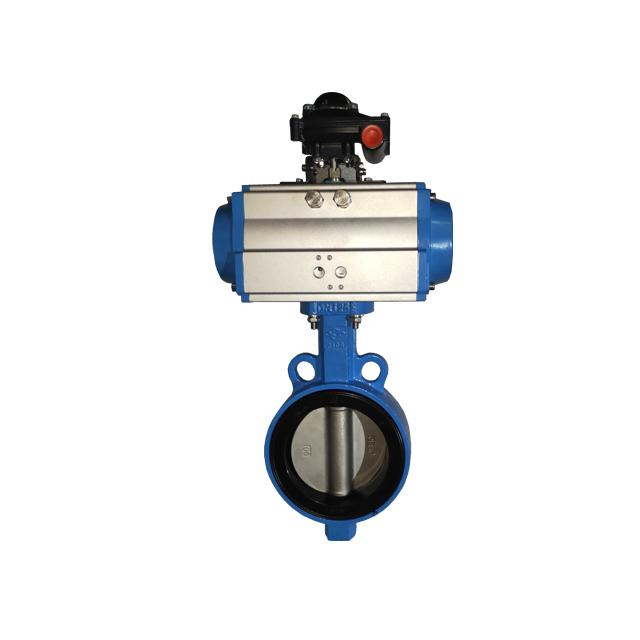Katup Kupu-kupu Listrik Vs Katup Kupu-kupu yang Dioperasikan Pneumatik
October 18, 2024
Katup kupu-kupu, yang dikenal karena desainnya yang sederhana dan pengoperasian seperempat putaran, tersedia dalam versi yang dioperasikan secara pneumatik dan elektrik. Meskipun keduanya memiliki fungsi dasar yang sama dalam mengatur aliran, metode aktuasinya memiliki perbedaan utama.
Apa perbedaan antara katup kupu-kupu yang dioperasikan secara elektrik dan pneumatik? Perbedaan antara katup kupu-kupu yang dioperasikan secara elektrik dan pneumatik terletak pada:
- Sumber listrik;
- Kontrol dan presisi;
- Kecepatan operasi;
- Biaya pemeliharaan; Dan
- Aplikasi
Katup Kupu-kupu yang Dioperasikan Listrik dan Pneumatik: Perbedaan Utama:
Sumber Daya
- Electric Butterfly Valve: Mengandalkan listrik untuk menggerakkan motor yang membuka dan menutup katup. Katup listrik biasanya menggunakan daya AC atau DC dan dapat diintegrasikan dengan sistem kontrol untuk pengoperasian otomatis.
- Katup Kupu-Kupu yang Dioperasikan Pneumatik: Menggunakan udara bertekanan untuk menggerakkan piston atau diafragma yang menggerakkan katup. Mereka memerlukan pasokan udara eksternal dan sistem kontrol menggunakan katup solenoid.
Kontrol dan Presisi
- Katup Kupu-Kupu Elektrik: Menawarkan presisi kontrol yang lebih baik. Katup listrik modern dapat diprogram untuk posisi pembukaan dan penutupan tertentu, sehingga memungkinkan pengaturan aliran yang lebih baik. Selain itu, katup listrik dapat dengan mudah diintegrasikan dengan sistem otomasi untuk kendali jarak jauh dan pemantauan.
- Katup Kupu-Kupu yang Dioperasikan Pneumatik: Menawarkan sistem kontrol yang lebih sederhana, biasanya terbatas pada posisi hidup/mati atau buka/tutup. Meskipun beberapa katup pneumatik menawarkan kemampuan pelambatan, presisinya umumnya kurang dibandingkan versi listrik.
Kecepatan Operasi
- Electric Butterfly Valve: Umumnya memiliki waktu pembukaan dan penutupan yang lebih lambat dibandingkan dengan katup pneumatik. Hal ini disebabkan adanya waktu yang dibutuhkan motor untuk mencapai posisi yang diinginkan.
- Katup Kupu-Kupu yang Dioperasikan Pneumatik: Menawarkan aktuasi yang lebih cepat karena kecepatan dan kekuatan udara bertekanan yang melekat. Hal ini menjadikannya ideal untuk aplikasi yang memerlukan waktu respons cepat.
Biaya dan Pemeliharaan
- Katup Kupu-kupu Listrik: Biasanya memiliki biaya awal yang lebih tinggi daripada katup pneumatik karena motor listrik dan sistem kontrolnya lebih kompleks. Persyaratan perawatan juga bisa lebih tinggi karena komponen listrik lebih rentan terhadap keausan.
- Katup Kupu-kupu yang Dioperasikan Pneumatik: Umumnya memiliki biaya awal yang lebih rendah dan memerlukan lebih sedikit perawatan dibandingkan dengan katup listrik. Namun, kebutuhan pasokan udara bertekanan menambah biaya tambahan dan kompleksitas pada sistem.
Aplikasi
- Katup Kupu-Kupu Elektrik: Ideal untuk aplikasi yang memerlukan kontrol aliran presisi, pemantauan dan otomatisasi jarak jauh, serta pengoperasian di lingkungan non-eksplosif. Contohnya termasuk sistem otomasi gedung, sistem HVAC, dan pabrik pengolahan bahan kimia.
- Katup Kupu-Kupu yang Dioperasikan Pneumatik: Sangat cocok untuk aplikasi yang memerlukan aktuasi cepat, biaya awal lebih rendah, dan pengoperasian di lingkungan yang berpotensi ledakan. Contohnya termasuk kompresor udara, instalasi pengolahan air, dan jaringan pipa minyak dan gas.

